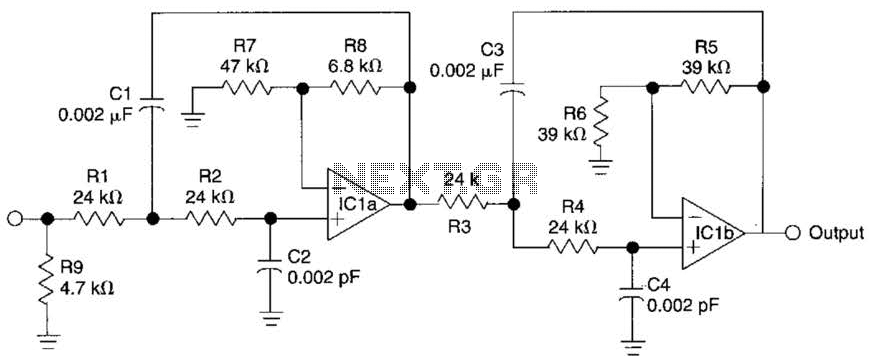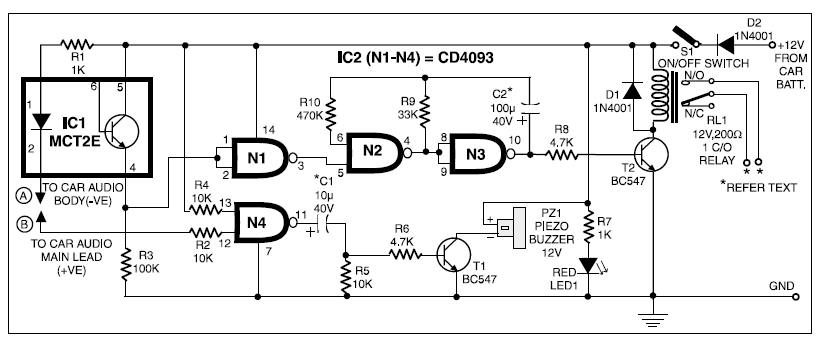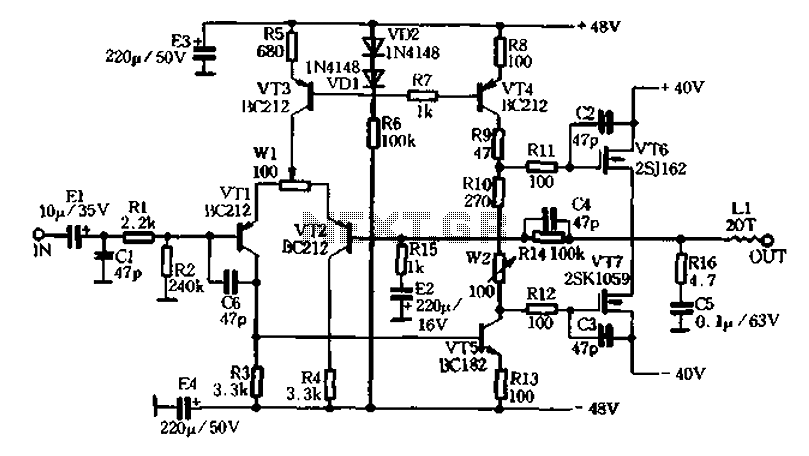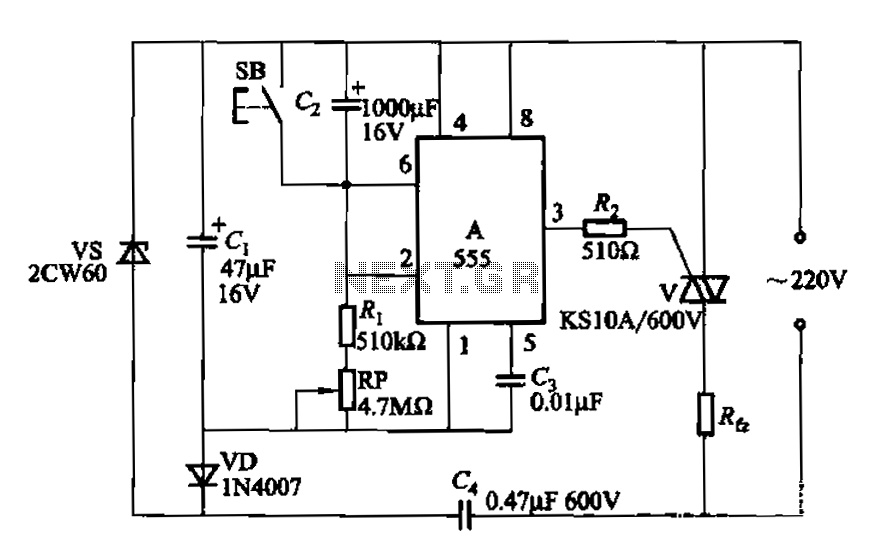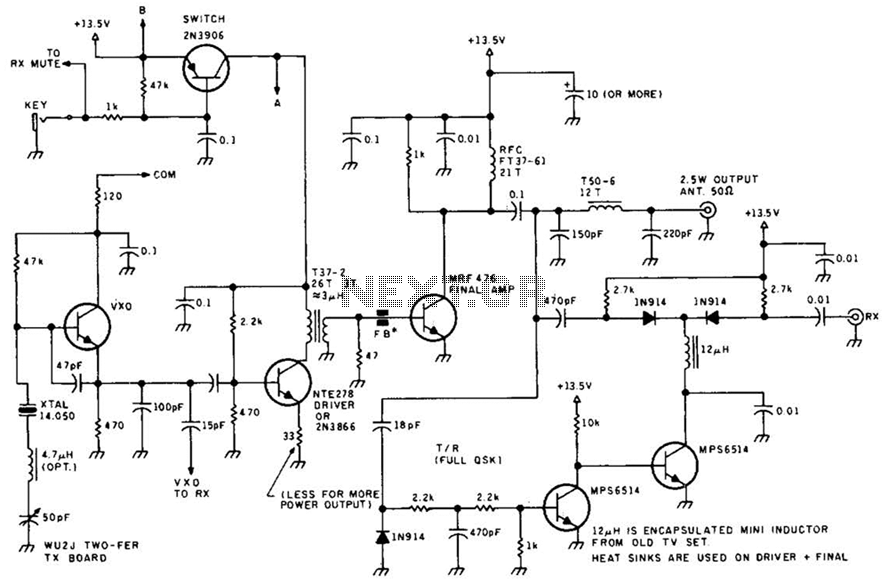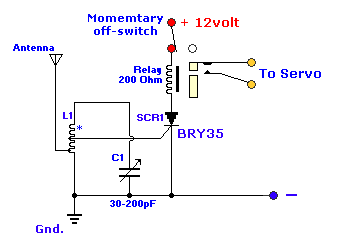
Miniature Audio Amplifier Circuit

This miniature audio amplifier provides an output of up to 250mW and can function as a final stage audio amplifier for radio sets. The schematic is straightforward, featuring one BC transistor.
The described miniature audio amplifier is designed for efficient amplification of audio signals in compact applications, particularly suitable for integration into radio sets. The amplifier operates with a maximum output power of 250mW, making it ideal for driving small speakers or headphones without requiring extensive power supply resources.
The core of the amplifier circuit is based on a single BC transistor, which serves as the primary active component. The BC transistor is typically a bipolar junction transistor (BJT) known for its reliability and performance in audio applications. The simplicity of the schematic not only facilitates easy assembly but also ensures minimal signal distortion, which is crucial for maintaining audio fidelity.
In a typical configuration, the input audio signal is coupled to the base of the BC transistor through a coupling capacitor, which blocks any DC component while allowing the AC audio signal to pass. The transistor's collector is connected to a power supply, while the emitter is often tied to ground through an emitter resistor, which helps stabilize the gain and sets the operating point of the transistor.
Feedback may be implemented in the circuit to enhance linearity and improve the overall performance of the amplifier. This can be achieved by connecting a resistor from the collector to the base, thereby providing a portion of the output signal back to the input. The output from the collector is then coupled to the load, typically a speaker, through another coupling capacitor to prevent DC from reaching the speaker.
The design of this miniature audio amplifier emphasizes compactness and efficiency, making it suitable for various portable and battery-operated devices. Its straightforward design allows for easy modifications and optimizations based on specific application requirements, such as adjusting component values to alter gain or frequency response. Overall, this audio amplifier serves as a practical solution for enhancing audio output in small electronic devices.This miniature audio amplifier delivers up to 250mW and can be used like a final stage audio amplifier for radio sets. The schematic is very simple: one BC.. 🔗 External reference
The described miniature audio amplifier is designed for efficient amplification of audio signals in compact applications, particularly suitable for integration into radio sets. The amplifier operates with a maximum output power of 250mW, making it ideal for driving small speakers or headphones without requiring extensive power supply resources.
The core of the amplifier circuit is based on a single BC transistor, which serves as the primary active component. The BC transistor is typically a bipolar junction transistor (BJT) known for its reliability and performance in audio applications. The simplicity of the schematic not only facilitates easy assembly but also ensures minimal signal distortion, which is crucial for maintaining audio fidelity.
In a typical configuration, the input audio signal is coupled to the base of the BC transistor through a coupling capacitor, which blocks any DC component while allowing the AC audio signal to pass. The transistor's collector is connected to a power supply, while the emitter is often tied to ground through an emitter resistor, which helps stabilize the gain and sets the operating point of the transistor.
Feedback may be implemented in the circuit to enhance linearity and improve the overall performance of the amplifier. This can be achieved by connecting a resistor from the collector to the base, thereby providing a portion of the output signal back to the input. The output from the collector is then coupled to the load, typically a speaker, through another coupling capacitor to prevent DC from reaching the speaker.
The design of this miniature audio amplifier emphasizes compactness and efficiency, making it suitable for various portable and battery-operated devices. Its straightforward design allows for easy modifications and optimizations based on specific application requirements, such as adjusting component values to alter gain or frequency response. Overall, this audio amplifier serves as a practical solution for enhancing audio output in small electronic devices.This miniature audio amplifier delivers up to 250mW and can be used like a final stage audio amplifier for radio sets. The schematic is very simple: one BC.. 🔗 External reference
